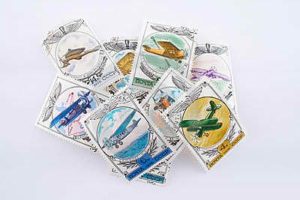 Postage stamp collecting and philately (or the study of stamps and postal history) are some of the world’s most popular hobbies. Postage stamps are often collected for their historical value and designs featuring a wide array of subjects including important personalities, flowers, animals and landmarks. Special releases and commemorative stamps are also highly collectible.
Postage stamp collecting and philately (or the study of stamps and postal history) are some of the world’s most popular hobbies. Postage stamps are often collected for their historical value and designs featuring a wide array of subjects including important personalities, flowers, animals and landmarks. Special releases and commemorative stamps are also highly collectible.
In the past, stamps are easily obtained from mails, then a popular means of communication. But due to advancement in technology and the popularity of telephones and electronic mail (email), sending letters via post has declined over the years. Today, many collectors purchase or trade stamps with other collectors to add to their stash.
Stamps are typically made from paper with image or design on the front and adhesive at the back. There are perforations on the sides of each stamp, facilitating easy separation from a sheet. Because they are made from paper, stamps are fragile and can get tears, folds or creases if not properly packed for shipping. Vintage stamps are even more fragile and must be handled with care to remain in good condition. Here are some tips on how to properly pack and ship stamps.
Place the stamp inside a protective sleeve or holder. Avoid using tape to seal the sleeve or holder as the adhesive matrial can damage the stamp.
Cut two pieces of cardboard to the exact size of the sleeve/holder. Sandwich the holder in between the two cardboard pieces. Use tape to secure the cardboards’ bottoms, left and right sides together. Do not tape the top. The cardboard pieces will prevent the stamp from getting folded or creased.
Insert the holder inside a regular envelope and seal the flap with a piece of scotch tape. Add addresses and take to your local post office for mailing.
